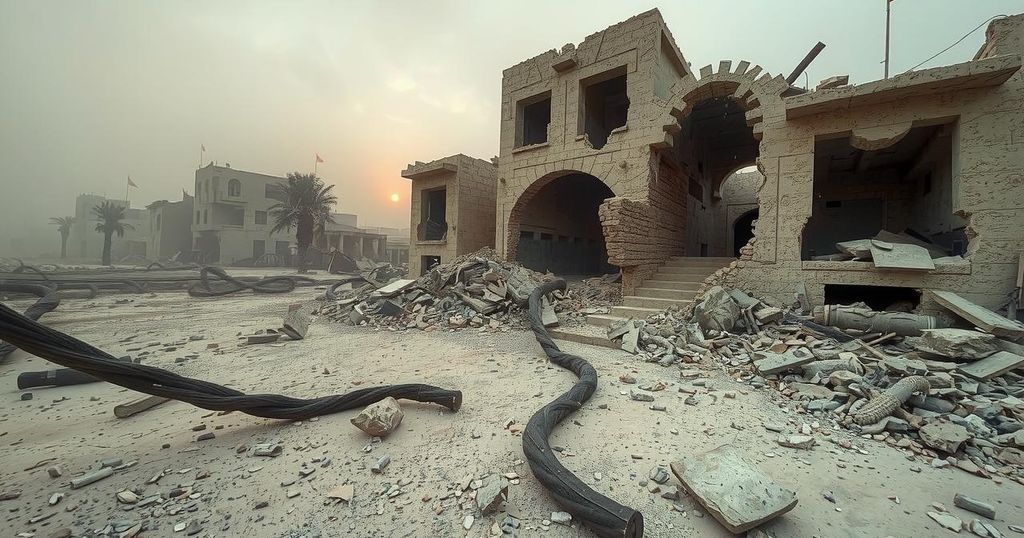The recent 7.7 magnitude earthquake in Myanmar has caused 1,644 deaths and over 3,400 injuries, with a similar toll in Thailand. While some view earthquakes as random geological events, Jewish sages interpret them as meaningful divine messages urging reflection and repentance. Historical examples illustrate how such disasters have called the community to spiritual awakening, reinforcing concepts of divine compassion and a reminder of their roles as a light to the nations.
The earthquake in Myanmar, which registered a magnitude of 7.7, has resulted in a catastrophic toll of 1,644 deaths, with injuries amounting to 3,408 and 139 individuals reported missing. In Thailand, the earthquake’s impact has led to 10 fatalities and thousands more injured. These figures highlight the daunting task of confirming casualties across the vast and affected region, and it is expected that these numbers may continue to rise.
Some perceive earthquakes as random occurrences tied to the movement of tectonic plates, suggesting they lack meaning. This perspective views earthquakes as a natural process devoid of significance, seeing them merely as energy release from geological phenomena. In contrast, Jewish sages interpret earthquakes as profound messages from the Divine, containing deeper meanings that prompt reflection and action.
A historic example provided by Rabbi Yair Hoffman references the September 1, 1923 earthquake in Japan, which led to over 100,000 deaths. Upon hearing the news, the Chofetz Chaim urged the Jewish community to engage in Teshuvah, a spiritual return to faith and values. This incident demonstrates how significant tragedies can serve as calls to moral awakening.
The Talmudic discussion in Brachos 59b elaborates on earthquakes, suggesting they are responses to the suffering of the Jewish people. Rav Katina relates earthquakes to the remembrance of God’s compassion as a reaction to their plight among nations. Furthermore, esteemed scholars like Rav Hai Gaon interpret tectonic disturbances as manifestations of Divine compassion, reflecting on the Jewish people’s suffering in exile.
Rabbeinu Chananel provides a contrasting view, suggesting that earthquakes signify God’s dissatisfaction with the treatment of the Jewish people, serving as reminders that they are not forsaken. He encourages the community to remain steadfast in their faith and actively participate in Torah observance.
The Maharal articulates that natural phenomena are not devoid of spiritual significance; they carry Divine messages. He emphasizes the need for Israel to fulfill its sacred role, suggesting that earthquakes signify a disparity between the present situation and its intended state. Hence, the earthquake serves as a clarion call for improvement and spiritual awakening among the Jewish people.
Ultimately, this earthquake conveys two vital messages: one of aspiration for a deeper connection to faith and the other of reassurance in God’s enduring love. The teachings of the Maharal inspire the Jewish community not to accept their current limitations but to strive for a time when they can illuminate the world positively.
As we reflect on this tragedy, we are reminded of our need for redemption and a reinstatement of faith. The timing of this earthquake compels us to pray for the hostages and to seek redemption in our hearts as the month of Nissan approaches, a period traditionally associated with renewal and hope.
In conclusion, the earthquake in Myanmar serves as a stark reminder of the fragility of human existence and the importance of spiritual introspection. Jewish sages interpret such disasters as profound messages from the Divine, urging the community toward repentance and renewal. The teachings provided by historical and religious perspectives emphasize hope, resilience, and the yearning for a deeper connection with God in times of adversity. As the community processes this tragedy, it is essential to remember that there exists a pathway to spiritual rejuvenation and communal solidarity in the face of suffering.
Original Source: vinnews.com




